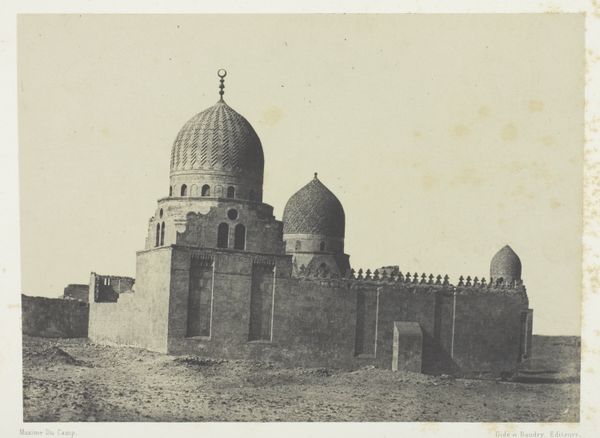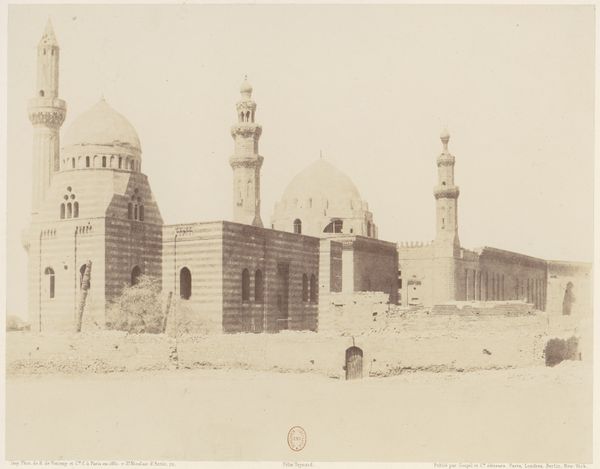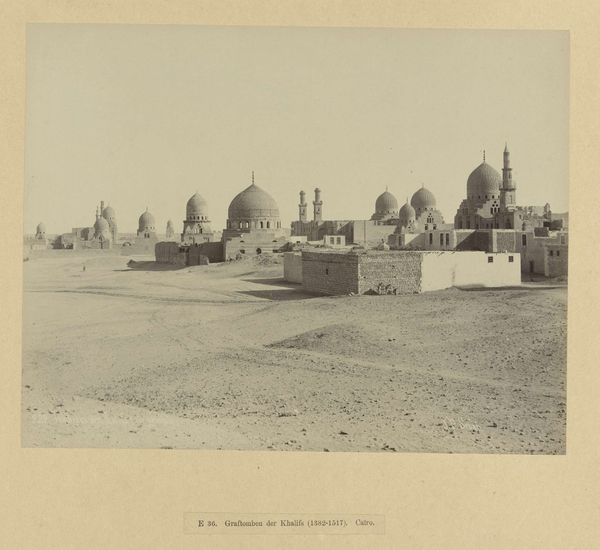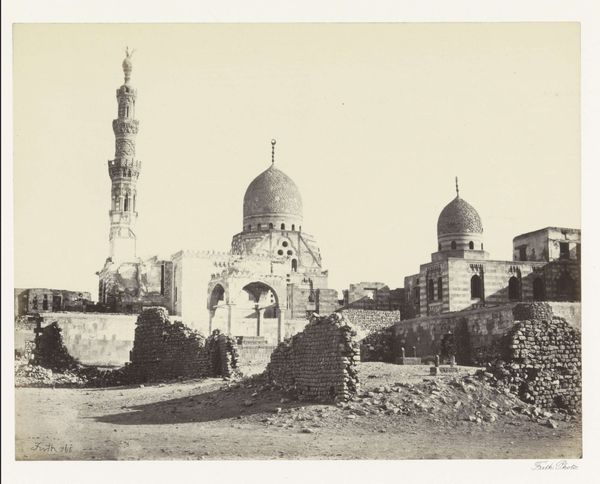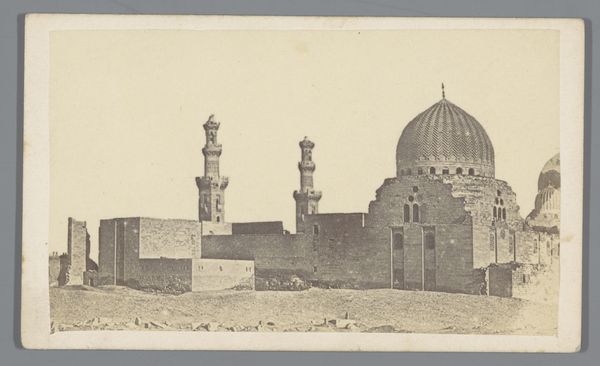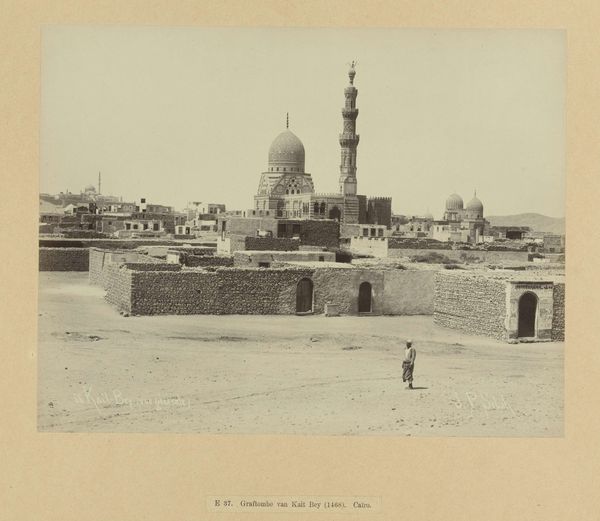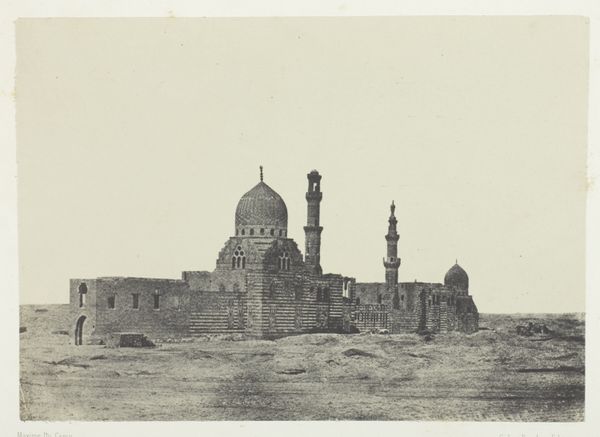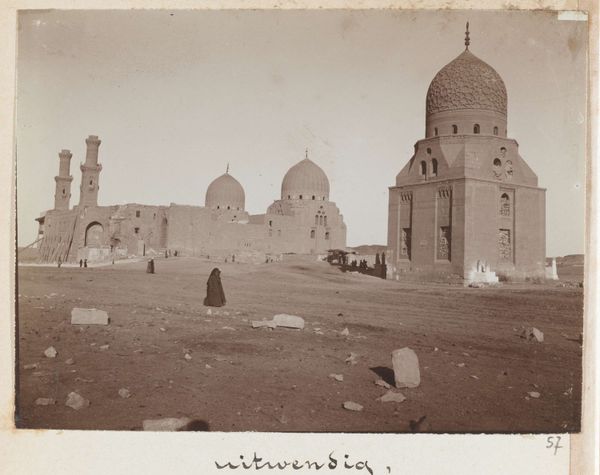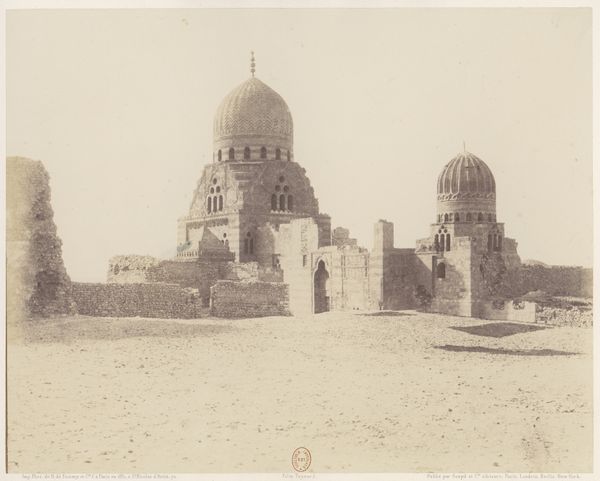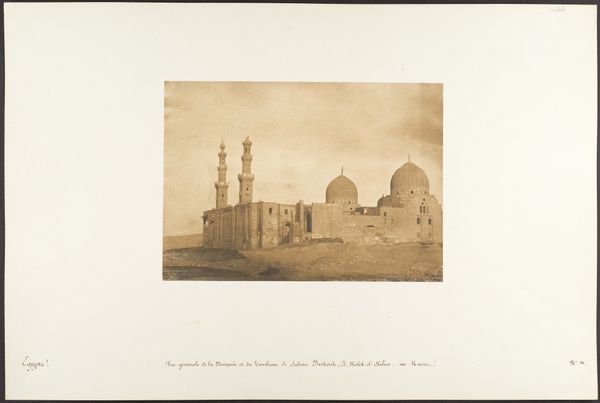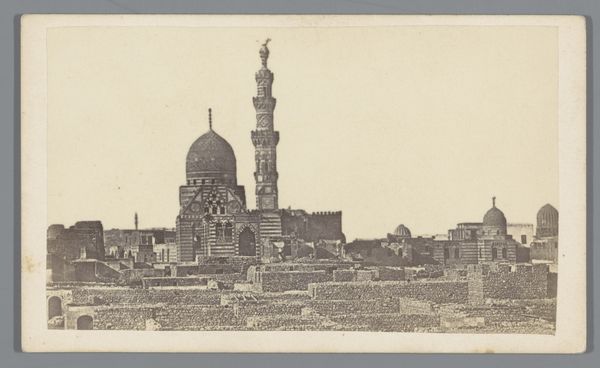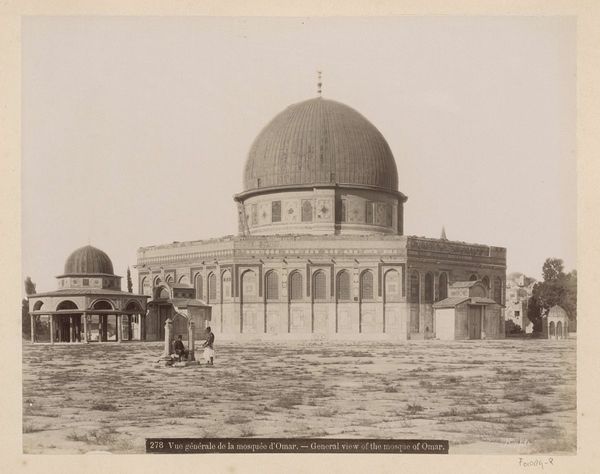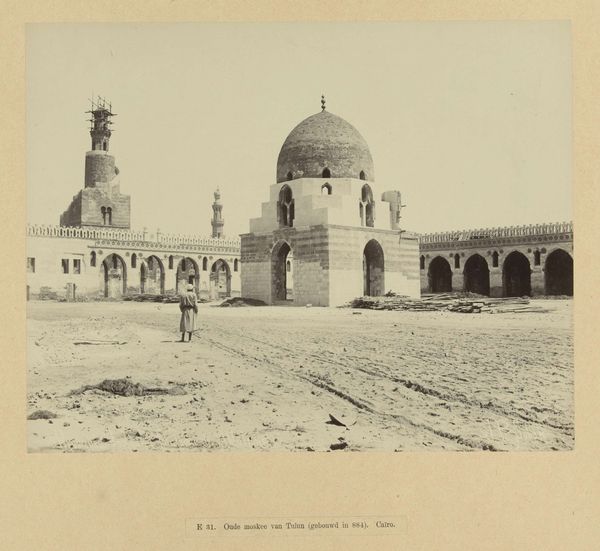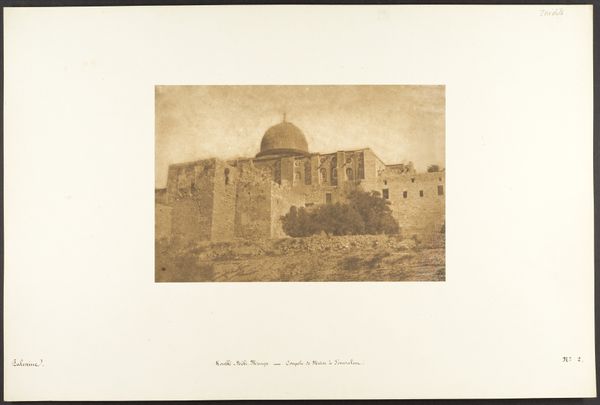
photography, gelatin-silver-print
#
landscape
#
photography
#
ancient-mediterranean
#
orientalism
#
gelatin-silver-print
#
islamic-art
Dimensions: height 90 mm, width 139 mm
Copyright: Rijks Museum: Open Domain
Curator: The gelatin silver print before us is titled "Gezicht op tombes van de Kaliefen te Caïro," or "View of the Tombs of the Caliphs in Cairo," created before 1914, currently residing at the Rijksmuseum. Editor: The composition strikes me immediately. The soft tones create a sense of serenity, yet there's a stark geometry to the domed structures, almost looming against the sky. Curator: It’s a striking example of Orientalist photography, fitting neatly into a tradition that exoticized and, some would argue, misrepresented the East for Western consumption. Consider the deliberate placement of the individual with the donkey in the foreground. It evokes a certain timelessness and also serves to highlight perceived cultural differences. Editor: Yes, and there's a compelling tension between the sharp architectural lines and the blurry softness of the land and sky. I wonder about the artist’s intention concerning focus. Why are those central domes so well-defined while the background dissipates? Is this to emphasise form and grandeur? Curator: Perhaps to draw the viewer’s eye toward the religious and historical significance. These tombs are of the Caliphs, leaders of the Islamic world, their presence speaking to Cairo’s crucial position within a vast network of power, faith and tradition. Editor: Considering the gelatin silver printing method, there’s something melancholic in how time and decay seem captured—almost suspended—within its chemical structure. The image seems like an allegory for empires. Curator: Exactly. The photo captures a pivotal moment when colonialism's influence was becoming undeniable. The fact it emphasizes "tombs" cannot be ignored, considering what followed soon afterwards with the Great War. Editor: I agree completely; viewing through this lens shifts its visual presentation, which at first appears to be an objective landscape study, into an archive loaded with complicated political dimensions. I do find it so impressive how form can shape historical perceptions in such intricate ways. Curator: And how photographs can, in turn, subtly reify political discourse by adopting those stylistic patterns in their image structures. This viewing really makes you reconsider Orientalism and the biases with which a society sees itself in the face of otherness.
Comments
No comments
Be the first to comment and join the conversation on the ultimate creative platform.
